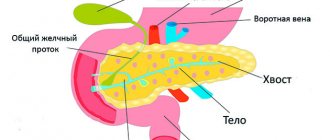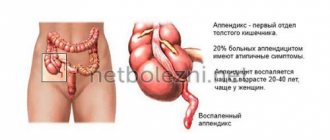Our clinic sees doctors who specialize in the treatment of psychogenic vomiting (F44.x, F45.31, F50.5 according to ICD-10).
Before starting treatment, an in-person consultation and differential diagnosis are required on the recommendation of a doctor, since nausea or vomiting may be a symptom of somatic pathology (for example, from the gastrointestinal tract, cardiovascular or endocrine system). Psychogenic nausea or vomiting can be an independent symptom complex within the framework of functional mental disorders, be a sign of other mental disorders, indicate a deterioration in the current state of health and the need for treatment adjustment.
If you have the results of previous examinations, you must take them with you to your initial appointment. Depending on the cause and characteristics of the disease, the doctor will choose a treatment strategy for psychogenic vomiting. It necessarily includes psychotherapy sessions. Pharmacotherapy is prescribed according to indications if psychogenic nausea causes problems in everyday life.
In some cases, consultation with a nutritionist may be necessary, since a long-term disease can cause metabolic disorders. For example, lead to a decrease in the volume of fluid in the body, the occurrence of hypokalemia, alkalosis or nocturia. A nutritionist will select the right diet to replenish the nutrients and elements missing in the body.
Test: “Attitude towards food intake – EAT-26”
Read the statements carefully and choose the answer option that best suits your condition.
Number of questions in the test: 26
Consultation with a doctor for the treatment of psychogenic vomiting:
+7
Thank you for your trust!
- Eliminating the root cause of the disease
- Psycho-emotional personality correction
- Individual selection of therapeutic diet
| Service | Price | |
| Ambulatory treatment | ||
| Psychiatrist consultation | 5 000 ₽ | |
| Reception of the chief physician Bocharov A.V. (candidate of medical sciences, associate professor) | 6 000 ₽ | |
| Appointment with a psychotherapist | 5 000 ₽ | |
| Consultation with a gastroenterologist | 2 820 ₽ | |
| Consultation with a nutritionist with nutrition development | ||
| Treatment in hospital | ||
| Delivery to hospital | For free | |
| Standard room | 8 900 ₽ | |
| 3-bed superior room | 12 000 ₽ | |
| 2-bed superior room | 15 000 ₽ | |
| 1 local VIP chamber | 19 500 ₽ | |
| Doctor's appointment 2 weeks after discharge | For free | |
Features of the disorder
Psychogenic vomiting is a disease that is diagnosed in emotionally unstable people. It is manifested by a feeling of nausea and involuntary release of gastrointestinal contents, which occurs during a period of nervous shock or experience, and goes away on its own as the intensity of the emotion decreases. In other words, these reactions from the gastrointestinal tract have a stable acquired reflex character and are a kind of reaction of the patient’s psyche to the external environment.
Modern medicine has come to the conclusion that the described eating disorder can be diagnosed in any adult, but there is a certain group of people who are most at risk of getting sick:
- adults suffering from certain mental and nervous diseases;
- patients with problems in the gastrointestinal tract;
- women under 40 years of age;
- teenage children.
As with other eating disorders, patients do not realize the seriousness of their condition and do not pay attention to alarming symptoms.
Adult patients neglect treatment and get used to periodic vomiting, considering this process a normal part of the body’s functioning. However, such carelessness leads to serious deterioration in health.
Nausea and vomiting. Practical recommendations for treatment
Definitions
Nausea is an unpleasant subjective sensation, often accompanied by vegetative symptoms (salivation, cold sweat, tachycardia, etc.);
can be both a precursor to vomiting and an independent clinical manifestation. Gagging is a rhythmic, painful spasmodic movement of the diaphragm and abdominal muscles, usually accompanying nausea and ending in vomiting.
Vomiting is the forced ejection of stomach contents through the mouth, which does not always occur after previous nausea. Nausea brings more discomfort to the patient, who may well tolerate vomiting 2-3 times a day, while chronic nausea can be a serious debilitating symptom that significantly reduces the quality of life.
Frequency – 50–60% of incurable cancer patients experience nausea and vomiting (up to 40% in the terminal period of other incurable diseases).
Causes : stomach irritation, gastrostasis, uremia, obstruction of the large intestine, prolonged constipation, infections, cough, psychogenic factors, medications, biochemical and metabolic disorders.
Pathogenesis
The pathogenesis of nausea and vomiting is a complex process. Nausea is a consequence of autonomic stimulation, while gagging and vomiting are carried out by the somatic part of the nervous system (Fig. 1).
Nausea is associated with atony of the upper gastrointestinal tract: the stomach, lower esophageal sphincter and pylorus, resulting in retrograde reflux of contents.
Vomiting is caused by the coordinated action of the gastrointestinal tract, diaphragm and abdominal muscles. The act of vomiting is caused by contraction of the respiratory muscles and abdominal muscles, pushing the contents out of the atonic upper parts of the gastrointestinal tract.
The vomiting center of the nervous system regulates a complex physiological process, receiving and combining signals from many sources.
Abbreviations for the names of receptor types: AChm = muscarinic cholinergic; α2 = α2adrenergic; D2 = dopamine type 2; GABA = gamma-aminobutyric acid; 5HT, 5HT2, 5HT3 = 5-hydroxytryptamine (serotonin) unspecified, type 2, type 3; H1 = histamine type 1; NK1 = neurokinin type 1. Antiemetic drugs act as antagonists of these receptors, with the central antiemetic effects of clonidine and opioids being agonistic. Area postrema is part of the rhomboid fossa in the medulla oblongata.
Grade
Collection and analysis of anamnesis usually allows us to establish the possible cause of nausea and vomiting, which determines treatment tactics.
Basic principles of drug treatment
The choice of drugs in palliative care depends on the identified causes of nausea and vomiting, the mechanisms of action of the drugs (Fig. 1, Table 1, Scheme 1), side effect profile and possible routes of administration. If possible, it is necessary to influence aggravating factors, such as taking medications, severe pain, cough, infectious complications, hypercalcemia.
Stage 1. Antiemetic etiological drugs
A. Gastritis, gastrostasis, functional obstruction (motility disorders) of the large intestine
Prokinetic agent with antiemetic effect:
- Metoclopramide/Cerucal:
● orally 10 mg 3–4 times a day (daily) and 10 mg as needed;
● continuous subcutaneous infusion (NPI, international experience in administering the drug) 30–40 mg/24 hours and 10 mg subcutaneously as needed;
● po, NPI, usually maximum 100 mg/24 hours.
- Domperidone/Motilium:
● po 10 mg 2–3 times a day.
b. Biochemical causes (morphine intake, hypercalcemia, renal failure)
Antiemetic drugs acting on the chemoreceptor trigger zone:
- haloperidol:
● po 0.5–1.5 mg at night and as needed;
● SC/NPI 2.5–5 mg/24 hours and 1 mg SC as needed;
● p/o, sc, NPI, usually maximum 10 mg/24 hours.
V. Cerebral causes (increased intracranial pressure, tumor compression, vestibular disorders)
Antiemetic drugs acting on the vomiting center:
- thiethylperazine/Torecan:
● p/o 1 tablet 6.5 mg 1–3 times a day;
● or rectally, 1 suppository 6.5 mg 1–3 times a day IM, subcutaneously 1 ml (6.5 mg/ml) 1–3 times a day. Prescribed in combination with dexamethasone
d. Mechanical obstruction of the large intestine, colic and/or the need to reduce secretion in the gastrointestinal tract
Antiemetic with antispasmodic and antisecretory effects:
- Hyoscine butyl bromide/ Buscopan:
● by NPI 60–120 mg/24 hours and 20 mg subcutaneously if necessary, the usual maximum dose is 300 mg/24 hours.
If frequent vomiting is present or nausea persists, it is recommended to administer drugs subcutaneously or by NPI (this method is still of little use in Russian practice, although it is used in many countries). To ensure the desired effect, you should begin with an emergency administration of the starting dose “as needed”, followed by titration to a regular dose. It must be monitored daily and attention must be paid to extradoses “as needed.”
If the therapy is ineffective, the possible causes should be reconsidered, the choice of antiemetic drug and the method of its administration should be analyzed. If therapy is ineffective, it is recommended to switch to broad-spectrum antiemetic drugs; in the absence of a positive response, to two-component therapy.
Stage 2. Broad spectrum drugs:
- levomepromazine:
● p/o, sc (international experience): 6–6.25 mg at night and as needed;
● the usual maximum dose is 50 mg/24 hours - either once at night or 25 mg twice a day;
● NPI should be considered.
Step 3. Two-component therapy (combination of antiemetic drugs with different mechanisms of action):
- haloperidol + 5HT3 antagonist , for example: Ondasentron 6 mg SC qd or NPI, or ondansetron 16 mg/24 hours NPI, when there is a massive release of 5HT/serotonin from intestinal enterochromaffin cells or platelets, for example: during radiation therapy on abdominal area, colon distension, kidney failure;
- levomepromazine + benzodiazepine , for example: lorazepam 0.5‒1 mg sublingually 2 times a day or midazolam 10 mg/24 hours NPI, especially with nausea due to increased anxiety or nausea of anticipation;
- levomepromazine + dexamethasone 8–16 mg p/o, sc, emergency dose and 1 r/d when nothing else helps; if there is no effect, stop using dexamethasone within one week by reducing the dosage daily; otherwise, reduce the dose by 2 mg per week to the minimally effective dose.
The simultaneous use of prokinetics (act through the cholinergic system) and M-cholinergic blockers (act competitively antagonistically) should be avoided.
Nausea may be a manifestation of seizures (eg, in meningeal carcinomatosis), in which case anticonvulsants or benzodiazepines should be used.
In the absence of mechanical obstruction of the large intestine, consider switching to oral administration of drugs three days after achieving a positive effect from NPI or subcutaneous administration. If the patient's condition improves, the dual-component therapy regimen can be simplified after 1–2 weeks by gradually reducing the dose of one or two antiemetic drugs. The algorithm for choosing a drug to relieve vomiting is also presented in Appendix 1.
Useful tips
- Even if the patient is not vomiting, ask if he is bothered by nausea - patients rarely talk about this themselves.
- The central genesis of vomiting may be indicated by the presence of a concomitant process in the brain, an increase in intracranial pressure; involvement of the vestibular apparatus in the process; psychogenic arousal (fear, anxiety). Neurogenic vomiting is usually not associated with food intake, it occurs in the morning, it is provoked by the movement of the patient, head movements, and is combined with pale skin or facial flushing.
- Prokinetics should be prescribed very carefully in case of intestinal obstruction, because they can worsen intestinal colic and provoke severe abdominal pain.
- Octreotide and ondansetron promote constipation.
- Discontinue medications if the cause of symptoms is eliminated. For example, opioids are initially associated with nausea, so prokinetics should be given concomitantly. After 7–10 days, nausea stops and prokinetics can be discontinued.
- We should not forget about the need for careful oral care.
- Nausea may be completely relieved or significantly reduced; Vomiting once a day may be acceptable for intestinal obstruction.
- Ensure that the patient and caregivers are aware that antiemetic medications must be taken regularly or as needed; Discuss your treatment plan with them.
- Suggest dietary changes in favor of small, frequent snacks.
- Explain the need to avoid odors that are unpleasant to the patient.
Important
Try to help the patient to move him from a state of exhaustion to a state of being able to control the symptom!
Thank you for your help in preparing the materials:
Kravchenko T.V. (Chief Physician of the State Budgetary Healthcare Institution, Center for Emergency Medicine, Department of Healthcare),
Gurkin S.P. (Deputy Chief Physician for the organization of inpatient care of the State Budgetary Healthcare Institution of the Central Clinical Hospital of the Department of Healthcare),
Ibragimova A. N. (Head of the branch of the First Moscow Hospice named after Vera Millionshchikova, State Budgetary Healthcare Institution of the Center for Emergency Medicine of the Department of Healthcare).
List of sources:
- Abuzarova G.R. Nevzorova D.V. Pain management in palliative care. Practical guide for the doctor. Moscow, 2022.
- Chronic pain syndrome (CPS) in adult patients in need of palliative care, 2016. ICD 10: R52.1/ R52.2.
- Introducing Palliative Care Fifth Edition. Editors Twycross R., Wilcock A., 2016.
- Hospice and Palliative Care Training for Physicians. Unipac Self-Study Program, 2008.
- Lanarkshire Palliative Care Guidelines, 2012.
- ProCare HospiceCare. Hospice Medication Utilization Guidelines. Eds. S. Shah, M. Madison. www.ProCareHospiceCare.com
You can download the leaflet “Nausea and vomiting in palliative care” in pdf format here:
Practical_guide_nausea_and_vomiting.pdf
Causes
The causes of psychogenic vomiting lie in increased excitability of the brain. Vomiting is a peculiar reaction of the human body to a stressful situation. It is worth noting that nervous vomiting has a paroxysmal nature, its frequency and abundance depend on the specific case. The causes of psychogenic disorders of the gastrointestinal tract in adults are as follows:
- increased anxiety (for example, fear on the eve of some important event or event);
- reaction to a particular memory (this can be not only an event, but also a smell, taste, etc.);
- a peculiar response of the body to a stressful or conflict situation, the manifestation of emotions that the patient is trying to hide;
- uncontrollable psychogenic nausea during psychosis.
A distinctive feature of the disease is the occurrence of vomiting in the morning, before breakfast. As the disease worsens, nausea may become more frequent; for example, if we are talking about self-provoking vomiting in bulimia, the release of gastrointestinal contents will be spontaneous.
Causes of psychogenic vomiting
How often in our speech do we use the expressions “this is sickening” or “you make me sick”? But thoughts are material. And our desires, supported by images, fears and hallucinations, in real life can “give” signals to the brain to “induce vomiting.”
Features of taste preferences
One way or another, nausea and vomiting are due to the fact that our body (and the stomach in particular) for some reason refuses to accept for digestion the food that we decide to swallow. Let's imagine a situation where you are invited to taste something that in your cultural community has always been classified as “Veto” (forbidden)? The attitude “is not this” is actually located in the brain, but the body reacts to this attitude. This is psychogenic vomiting. This happens in children: they are force-fed something they find unpleasant and tasteless. For tourists: when trying to try exotic food (large insects, for example).
Symptoms of psychogenic disorder
When the body encounters one or another emotional stress, the brain generates a signal to prepare the body for fight. If an adult has a nervous disorder, the reaction to the message may be erroneous.
Symptoms in adults during an exacerbation of the disease are as follows:
- increased sweating due to increased work of the sweat glands;
- total weakness, apathetic state, lack of physical strength;
- increased heart rate;
- irritability;
- lowering blood pressure, etc.
At the same time, the nervous system reacts inadequately to seemingly familiar things and ordinary situations, which in a healthy state of the body do not cause irritation.
It is noteworthy that upon completion of the stressful situation, the person completely returns to normal, psychogenic nausea recedes, in some cases being replaced by an increased feeling of hunger.
Anxiety, despair, fear...
The body's reaction to a strong emotional outburst: passing exams, an important interview, an important public speech, a fateful sports competition, one's own wedding - can also cause psychogenic vomiting. In this case, to get rid of the nauseating reaction to inevitable events in your own life, you can be advised to find methods of calming and restoring mental balance. Give yourself a chance to rest, take a break. And allow for the possibility of making a mistake or making a wrong choice, from which no one is safe. Don't be too hard on yourself!
Treatment options
When talking about the treatment of psychogenic overeating and psychogenic vomiting, it is important to take an integrated approach. The fact is that a long-term disease negatively affects the nature of metabolism in the body of an adult - the extracellular fluid volume is reduced, alkalosis, hypokalemia, nocturia and other life-threatening conditions often develop. Therefore, it is extremely important to approach your treatment program responsibly. To treat psychogenic vomiting, the following is used:
- drug therapy;
- psychotherapy, the purpose of which is to combat obsessive thoughts, reduce anxiety and dull the feeling of nausea;
- diet therapy - the menu is designed in such a way that the patient receives all the necessary nutrients with sufficient calories;
- developing healthy eating habits;
- weight gain under the supervision of a nutritionist and trainer;
- treatment of associated complications.
Serious psychological trauma
But if in cases with taste preferences the search for the cause of psychogenic vomiting lies on the surface, recognizing what prompts the patient’s body to spontaneously induce vomiting, for example, on the same day every year, is a much more difficult task. Thus, in medical practice, there are indeed examples when such vomiting occurred in women on the anniversary of a miscarriage or abortion, as a consequence of deep emotional trauma associated with the loss of a long-awaited child or a mistaken choice not to become a mother.
How to get rid of psychogenic vomiting?
A person suffering from constant psychogenic vomiting may not feel well.
Poor emotional and physical well-being greatly affects life and thoughts about the future. At the Anapa-Okean sanatorium, our specialists will select a course of treatment and rehabilitation that will not only reduce the frequency of psychogenic nausea, but also resolve your psychological problems and normalize your diet. It is difficult for one to deal with his own problems. And in cases where it seems to you that the causes of periodic vomiting and nausea are unknown to you and you don’t know what to do to stop this unpleasant reaction of your body - trust the professionals! In contact with
Causes of nausea in a child
Based on their origin, the causes of nausea can be divided into several categories.
Nausea in a child due to “nerves”
The central nervous system is involved here. The condition occurs when:
- head injuries and concomitant concussions;
- hypertensive or hypotensive crisis (sharp increase or decrease in blood pressure). This phenomenon is not uncommon in children during adolescence, when the body experiences hormonal overload, and surges in blood pressure occur quite often. Vomiting may provide relief, but not for long;
- encephalitis (inflammation of the membranes of the brain);
- the presence of benign neoplasms in the brain (slowly progressing and not metastasizing);
- meningitis (inflammation of the brain);
- malignant tumors of the brain, cerebellum;
- "sickness" in transport. This condition is associated with weak functioning of the vestibular apparatus. It may disappear completely with age. If your child is prone to such conditions, you should not travel long distances, and you should always have antiemetics with you. The peculiarity of this type of nausea is its suddenness. Vomiting does not bring relief, after it the condition may even worsen. Source: Lilenko S.V. Motion sickness in children and adolescents: pathogenesis, symptoms, prevention and treatment // Russian Pediatric Journal. 2016; 19 (1):49-54. DOI 10.18821/1560-9561-2016-19 (1)-49-54
If a child experiences repeated nausea without fever (or with low temperature) and diarrhea or without vomiting, there can be a variety of reasons. Such conditions are reasons to immediately consult a doctor. With timely treatment, the prognosis is generally favorable.
"Toxic" nausea
It is associated with the presence in the body of toxins of various origins that circulate through the circulatory system:
- The most common cause of this ailment is poisoning from stale foods that contain E. coli. You can also be poisoned by various poisonous plants (mushrooms) or by exceeding the permissible dose of medication. Poisoning in a child, in addition to nausea, causes fever and abdominal pain, diluted stool; Source: E.O. Komarovsky Handbook of sensible parents. Part 2. Emergency care. Eksmo-Press, 2011
- renal failure. It can be caused by a number of diseases - from congenital insufficiency to acquired pathologies. If the kidneys do not perform their function properly, an excess amount of toxins appears in the body, causing permanent nausea;
- liver failure. The liver, like the kidneys, performs the function of removing toxins. Liver cell destruction (which can be acute or chronic) also causes occasional nausea in children;
- various types of benign and malignant tumors;
- thyrotoxicosis (associated with dysfunction of the thyroid gland) - poisoning of the body with hubbub.
Nausea caused by diseases of the gastrointestinal tract
- gastritis – inflammation of the mucous membranes of the stomach. Nausea appears after eating and may also be accompanied by a burning sensation and a feeling of heaviness in the stomach, heartburn;
- taking certain medications (for example, antibiotics). You should carefully study the side effects of the medicine, and if such symptoms appear, ask your doctor to prescribe another drug;
- duodenitis (inflammation of the duodenum);
- pancreatitis – inflammation of the pancreas. The child experiences nausea after eating. May be accompanied by bitterness in the mouth, a feeling of heaviness in the right hypochondrium, bloating;
- appendicitis. One of the signs of inflammation of the cecum, in addition to pain in the side, is periodic nausea. If you suspect appendicitis, you should immediately call an ambulance;
- peptic ulcer of the stomach or duodenum - the formation of wounds on the mucous membranes of the gastrointestinal tract;
- cholecystitis (inflammation of the gallbladder) and cholelithiasis. Accompanied by a feeling of bitterness in the mouth;
- tumors of the gastrointestinal tract;
- disruption of the gastrointestinal tract (natural movement of food and feces through the digestive system). It often occurs due to a foreign object swallowed by a child;
- congenital pathologies of the gastrointestinal tract.
If a child periodically experiences nausea, this is a serious reason to contact a pediatric gastroenterologist, who will prescribe tests. The sooner treatment is started, the more favorable the medical prognosis will be.










